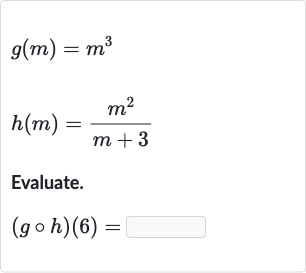AI tutor
Full solution
Q. Evaluate.
- Understand Function Composition: Understand the composition of functions. The composition of two functions and , denoted as , means that we first apply and then apply to the result of .
- Evaluate at : Evaluate at .
- Evaluate at Result: Evaluate at the result from Step .Since , we now evaluate at .
- Conclude Composition Value: Conclude the value of the composition . Since , we have:
More problems from Compare linear and exponential growth
QuestionGet tutor help
QuestionGet tutor help
QuestionGet tutor help
QuestionGet tutor help
QuestionGet tutor help
QuestionGet tutor help
QuestionGet tutor help

